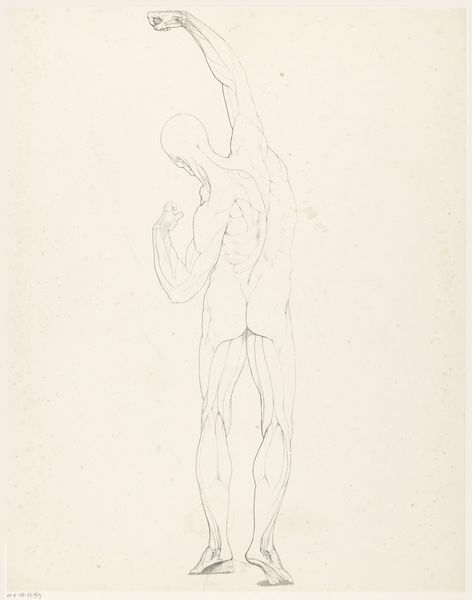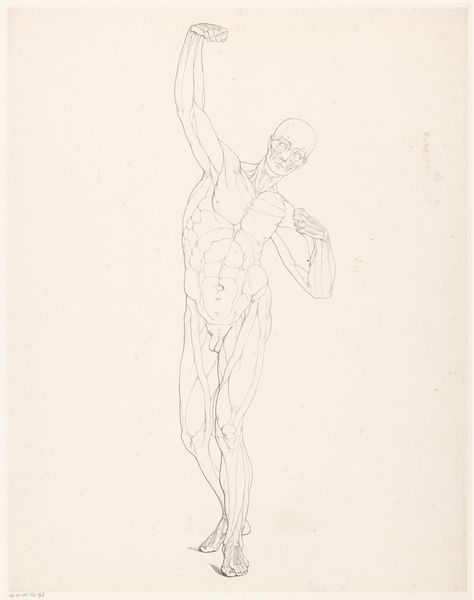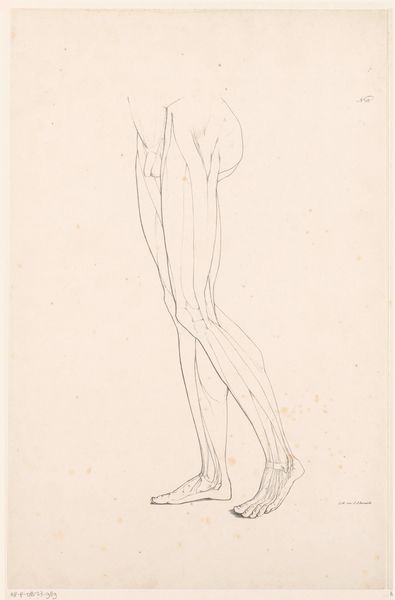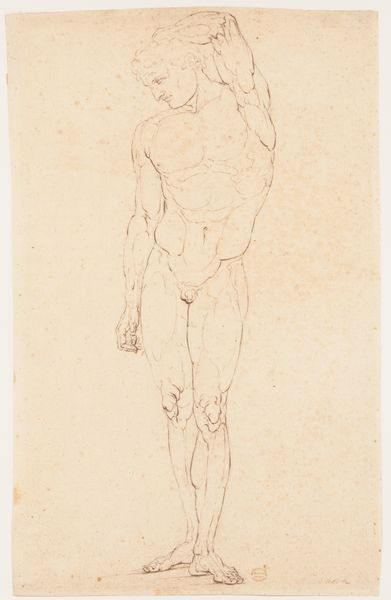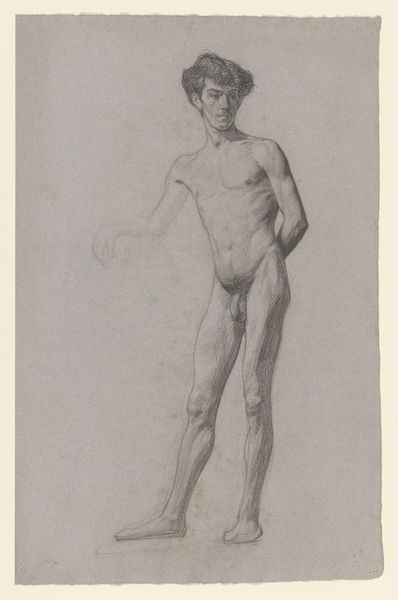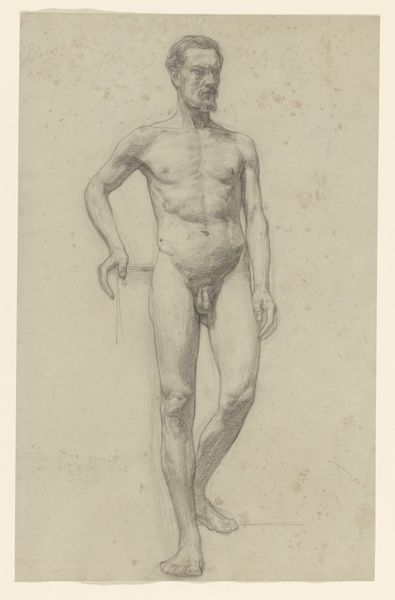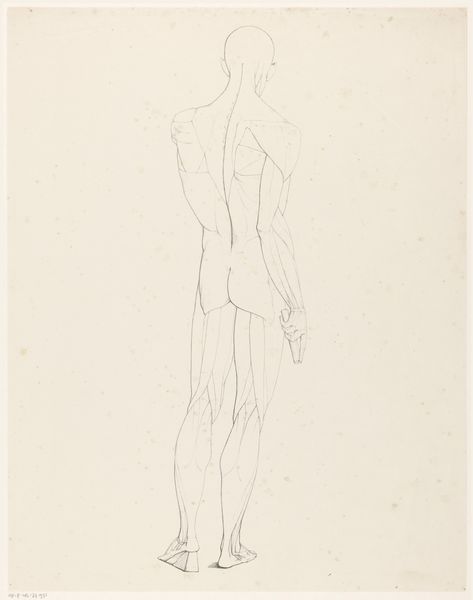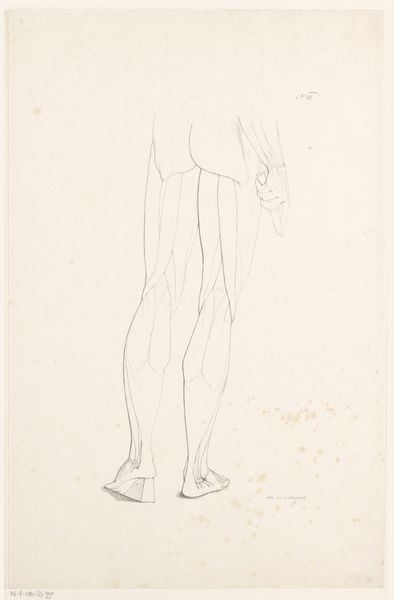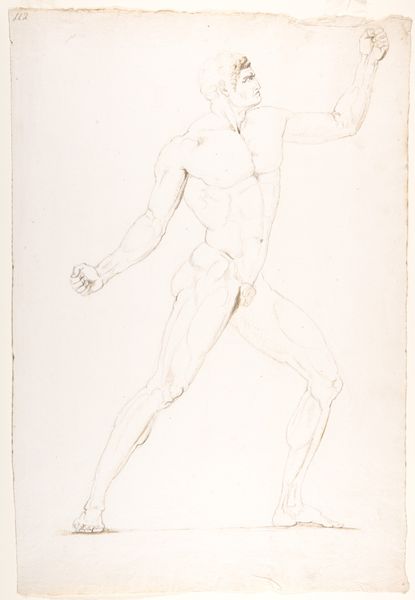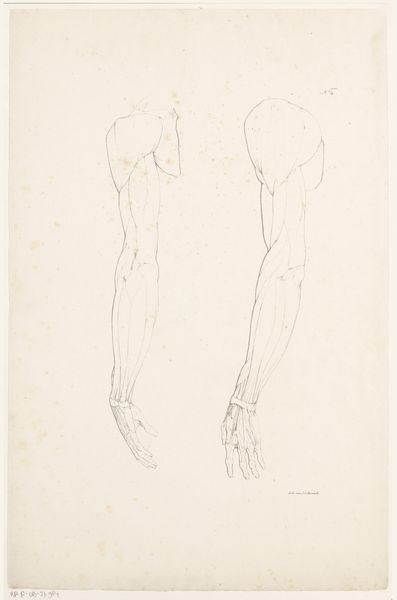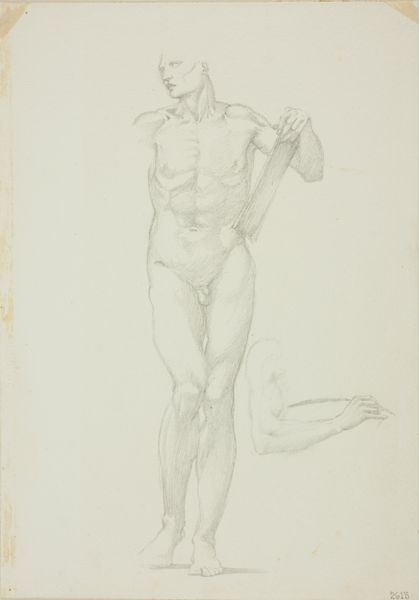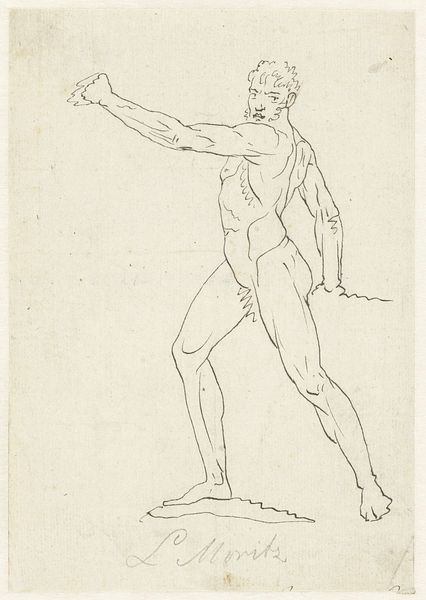
drawing, pencil
#
portrait
#
drawing
#
amateur sketch
#
imaginative character sketch
#
light pencil work
#
thin stroke sketch
#
pencil sketch
#
figuration
#
idea generation sketch
#
ink drawing experimentation
#
pencil
#
line
#
sketchbook drawing
#
pencil work
#
academic-art
#
realism
#
initial sketch
Dimensions: height 545 mm, width 425 mm
Copyright: Rijks Museum: Open Domain
Jean Augustin Daiwaille rendered this écorché, or flayed figure, as a study, inviting us to contemplate the symbolic weight of the exposed human form. The écorché, with its exposed muscles, carries echoes of ancient sacrificial rites, where the unveiling of inner truths was sought through the body. This tradition echoes in the Renaissance, where artists like Michelangelo dissected corpses to capture the body's architecture. Here, in Daiwaille's rendering, we see a sanitized, neoclassical approach. Yet, the inherent tension remains. The écorché motif appears again and again in art history, revealing a deeper cultural fascination with mortality. Consider the dance macabre motifs of the Medieval period. In those images, death is a skeletal figure who exposes the fragility of life. Daiwaille's écorché embodies this awareness, acting as a reminder of our mortality. This image powerfully engages with our subconscious fears. The écorché, a symbol of knowledge and mortality, continues its dance through time, resurfacing in contemporary art, a testament to the enduring human quest to understand ourselves.
Comments
No comments
Be the first to comment and join the conversation on the ultimate creative platform.
